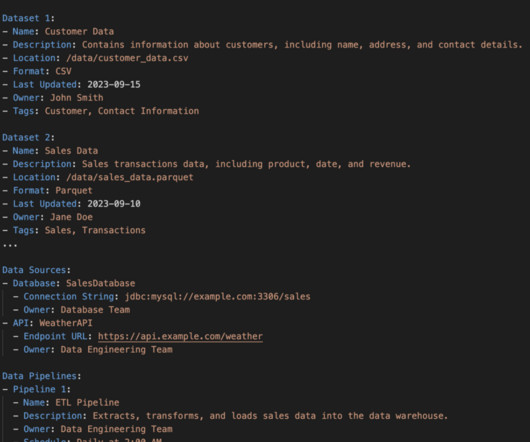ETL Pipelines With Python Azure Functions
Mlearning.ai
JULY 8, 2023
One of them is Azure functions. In this article we’re going to check what is an Azure function and how we can employ it to create a basic extract, transform and load (ETL) pipeline with minimal code. A batch ETL works under a predefined schedule in which the data are processed at specific points in time.












Let's personalize your content